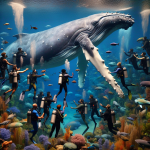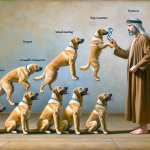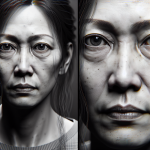
Unlocking Whale Communication for Extraterrestrial Seekers
A Pioneering Engagement with a Humpback Whale in Alaska
A recent pioneering engagement close to the Alaskan shores has marked a notable chapter in the annals of interspecies communication: a scientific collective successfully established reciprocal dialogue with a humpback whale by employing the cetacean’s natural acoustic signals. At the forefront of this venture is Dr. Brenda McCowan, who helms the research group Whale-SETI housed within the University of California, Davis. The project yielded a distinctive encounter with a humpback whale, affectionately dubbed Twain.
A remarkable interaction with Twain
In an intimate interaction prompted by the research crew’s emission of a humpback “contact” call via an underwater transducer, Twain was drawn to the team’s vessel. The whale’s behavior, which included encircling the boat and replying to the calls for a duration of approximately 20 minutes, was hailed as a possibly unprecedented occasion of a humpback whale partaking in direct exchange with humans through its vernacular. This episode, described by Dr. McCowan, was met with enthusiasm as an important breakthrough.
Decoding the nuances of communication
The pursuit of the Whale-SETI initiative pivots on decoding the nuances of cetacean communication to inform the identification of intelligent patterns in the perpetual quest for extraterrestrial entities. Dr. Fred Sharpe of the Alaska Whale Foundation comments on the intricate social dynamics and activities of the humpback whales, while Dr. Laurance Doyle, associated with the SETI Institute, parallels the whale’s social willingness with anticipated comportment of alien life forms. This lively disposition aids in the meticulous scrutiny for intelligent cosmic signals.
The Whale-SETI faction’s plans
The Whale-SETI faction, with fiscal support from the Templeton Foundation’s Diverse Intelligences Program, is formulating an exposé on the visual communicative gestures of humpback whales, such as their creation of bubble formations. They are poised to leverage mathematical and technological advancements, encompassing information theory and algorithmic learning, to dissect the intricate layers of whale discourse. As elucidated in the scholarly publication PeerJ, their scholarly labour strives to decipher elements within whale transmissions that could reveal a level of sophistication comparable to human language, or conceivably, to languages of an extraterrestrial origin.
Implications of the discovery
The capacity for dialogue with whales, exemplified by the engagement with Twain, represents a pivotal stride towards grasping diverse manifestations of intellect. This scientific inquiry into the sentient depths of the sea aspires not only to further the preservation of these elegant giants but also to equip humanity for prospective dialogues with intelligent forms from the celestial expanses.
The collective intellect of the SETI Institute, University of California, Davis, and the Alaska Whale Foundation tenaciously forays into marine biological research and the cosmic search for life. Their interpretations of cetacean linguistics endeavor to erect a bridge connecting intelligent earthly marine life with that scattered across the cosmos.








